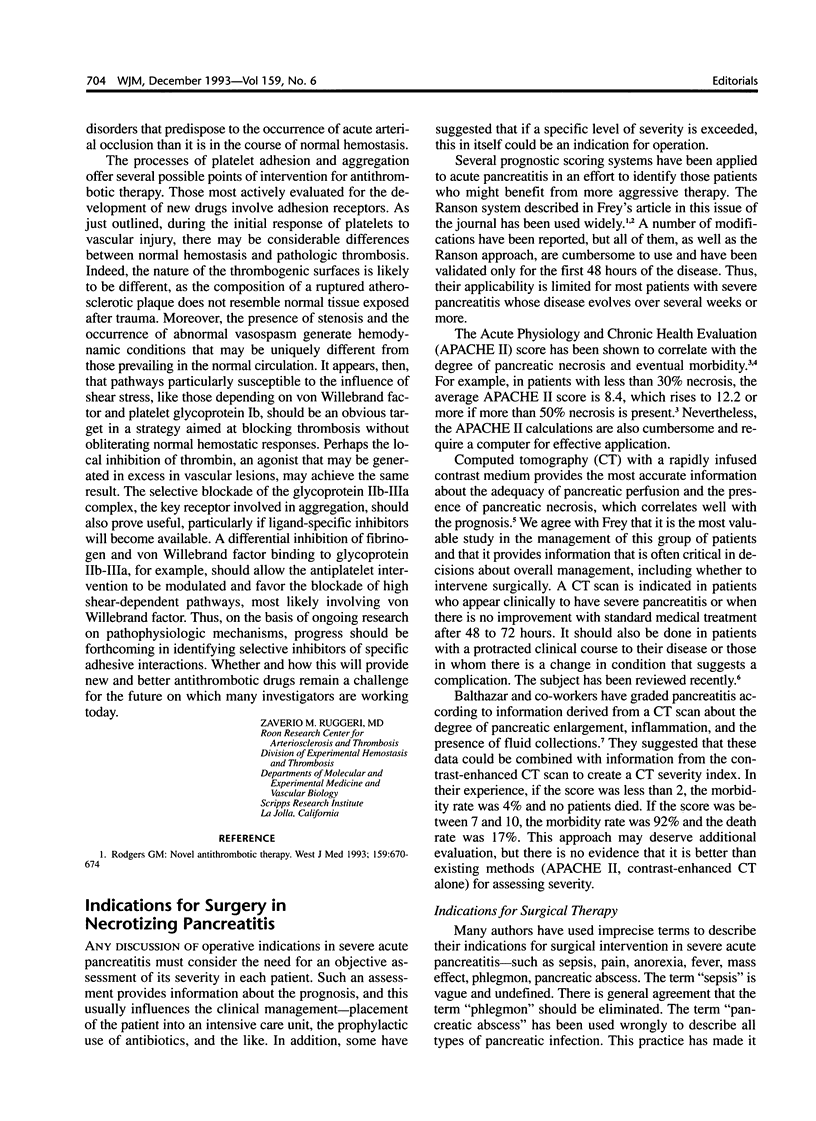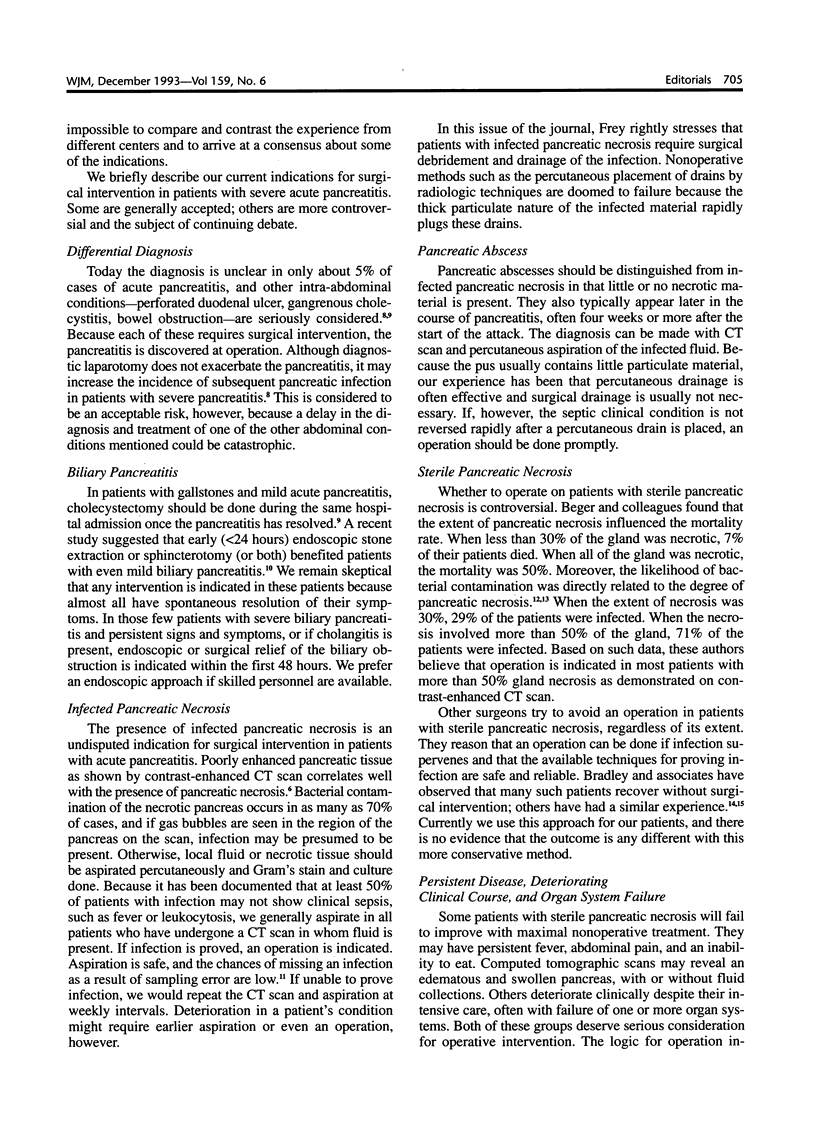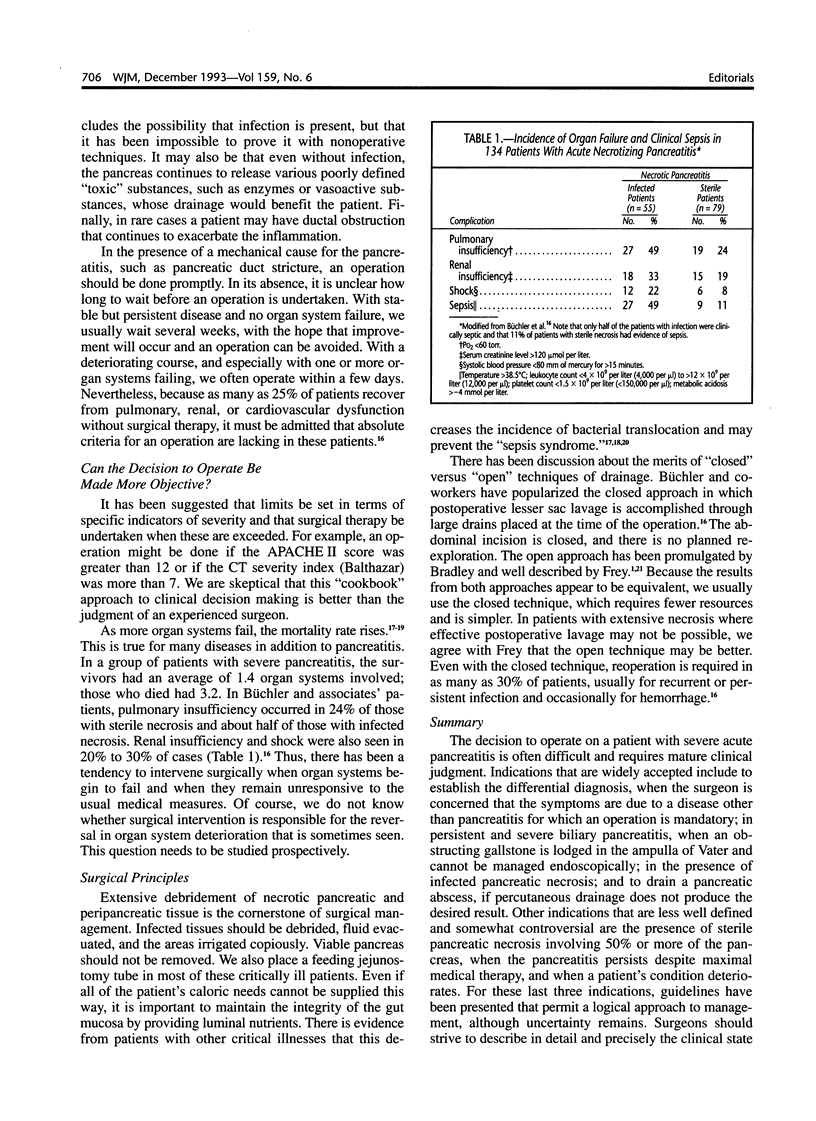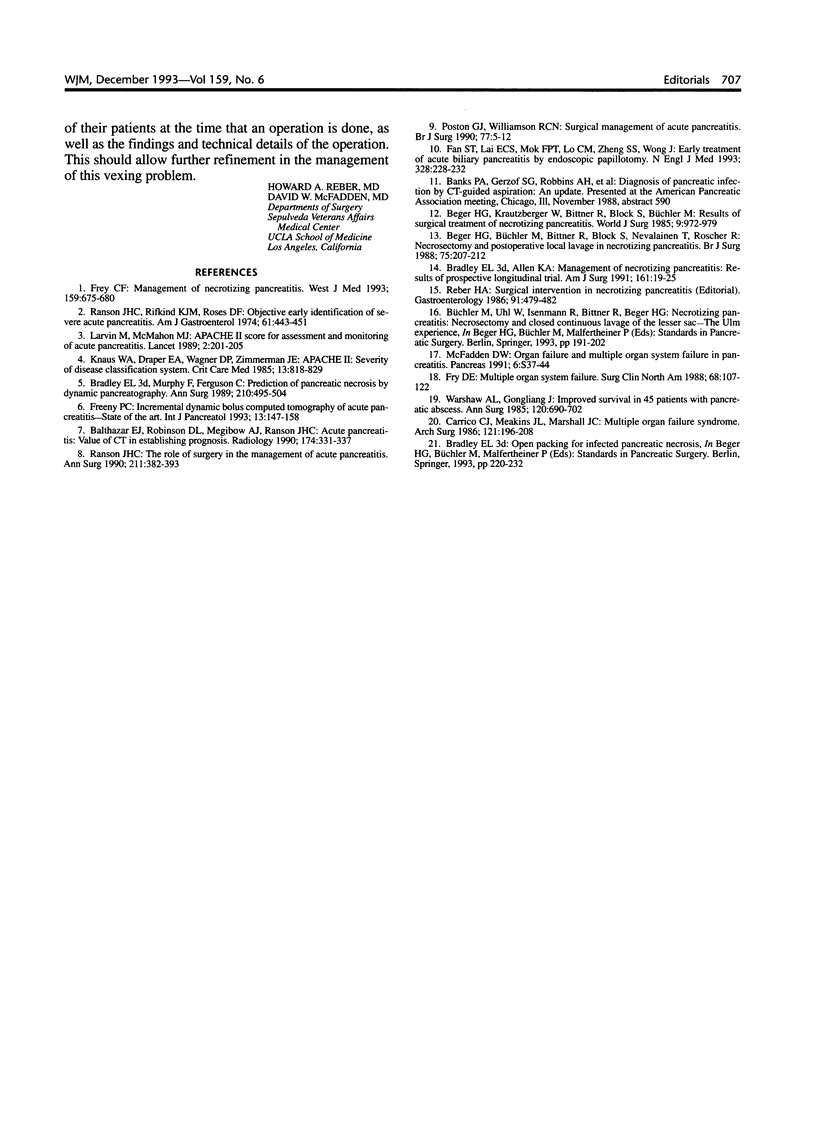Abstract
The decision to operate on a patient with severe acute pancreatitis is often difficult and requires mature clinical judgment. Indications that are widely accepted include to establish the differential diagnosis, when the surgeon is concerned that the symptoms are due to a disease other than pancreatitis for which an operation is mandatory; in persistent and severe biliary pancreatitis, when an obstructing gallstone is lodged in the ampulla of Vater and cannot be managed endoscopically; in the presence of infected pancreatic necrosis; and to drain a pancreatic abscess, if percutaneous drainage does not produce the desired result. Other indications that are less well defined and somewhat controversial are the presence of sterile pancreatic necrosis involving 50% or more of the pancreas, when the pancreatitis persists despite maximal medical therapy, and when a patient's condition deteriorates. For these last three indications, guidelines have been presented that permit a logical approach to management, although uncertainty remains. Surgeons should strive to describe in detail and precisely the clinical state of their patients at the time that an operation is done, as well as the findings and technical details of the operation. This should allow further refinement in the management of this vexing problem.
Full text
PDF



Selected References
These references are in PubMed. This may not be the complete list of references from this article.
- Balthazar E. J., Robinson D. L., Megibow A. J., Ranson J. H. Acute pancreatitis: value of CT in establishing prognosis. Radiology. 1990 Feb;174(2):331–336. doi: 10.1148/radiology.174.2.2296641. [DOI] [PubMed] [Google Scholar]
- Beger H. G., Büchler M., Bittner R., Block S., Nevalainen T., Roscher R. Necrosectomy and postoperative local lavage in necrotizing pancreatitis. Br J Surg. 1988 Mar;75(3):207–212. doi: 10.1002/bjs.1800750306. [DOI] [PubMed] [Google Scholar]
- Beger H. G., Krautzberger W., Bittner R., Block S., Büchler Results of surgical treatment of necrotizing pancreatitis. World J Surg. 1985 Dec;9(6):972–979. doi: 10.1007/BF01655406. [DOI] [PubMed] [Google Scholar]
- Bradley E. L., 3rd, Allen K. A prospective longitudinal study of observation versus surgical intervention in the management of necrotizing pancreatitis. Am J Surg. 1991 Jan;161(1):19–25. doi: 10.1016/0002-9610(91)90355-h. [DOI] [PubMed] [Google Scholar]
- Bradley E. L., 3rd, Murphy F., Ferguson C. Prediction of pancreatic necrosis by dynamic pancreatography. Ann Surg. 1989 Oct;210(4):495–504. doi: 10.1097/00000658-198910000-00010. [DOI] [PMC free article] [PubMed] [Google Scholar]
- Carrico C. J., Meakins J. L., Marshall J. C., Fry D., Maier R. V. Multiple-organ-failure syndrome. Arch Surg. 1986 Feb;121(2):196–208. doi: 10.1001/archsurg.1986.01400020082010. [DOI] [PubMed] [Google Scholar]
- Fan S. T., Lai E. C., Mok F. P., Lo C. M., Zheng S. S., Wong J. Early treatment of acute biliary pancreatitis by endoscopic papillotomy. N Engl J Med. 1993 Jan 28;328(4):228–232. doi: 10.1056/NEJM199301283280402. [DOI] [PubMed] [Google Scholar]
- Freeny P. C. Incremental dynamic bolus computed tomography of acute pancreatitis. Int J Pancreatol. 1993 Jun;13(3):147–158. doi: 10.1007/BF02924435. [DOI] [PubMed] [Google Scholar]
- Frey C. F. Management of necrotizing pancreatitis. West J Med. 1993 Dec;159(6):675–680. [PMC free article] [PubMed] [Google Scholar]
- Fry D. E. Multiple system organ failure. Surg Clin North Am. 1988 Feb;68(1):107–122. doi: 10.1016/s0039-6109(16)44435-x. [DOI] [PubMed] [Google Scholar]
- Knaus W. A., Draper E. A., Wagner D. P., Zimmerman J. E. APACHE II: a severity of disease classification system. Crit Care Med. 1985 Oct;13(10):818–829. [PubMed] [Google Scholar]
- Larvin M., McMahon M. J. APACHE-II score for assessment and monitoring of acute pancreatitis. Lancet. 1989 Jul 22;2(8656):201–205. doi: 10.1016/s0140-6736(89)90381-4. [DOI] [PubMed] [Google Scholar]
- McFadden D. W. Organ failure and multiple organ system failure in pancreatitis. Pancreas. 1991;6 (Suppl 1):S37–S43. doi: 10.1097/00006676-199101001-00007. [DOI] [PubMed] [Google Scholar]
- Poston G. J., Williamson R. C. Surgical management of acute pancreatitis. Br J Surg. 1990 Jan;77(1):5–12. doi: 10.1002/bjs.1800770104. [DOI] [PubMed] [Google Scholar]
- Ranson J. H., Rifkind K. M., Roses D. F., Fink S. D., Eng K., Localio S. A. Objective early identification of severe acute pancreatitis. Am J Gastroenterol. 1974 Jun;61(6):443–451. [PubMed] [Google Scholar]
- Ranson J. H. The role of surgery in the management of acute pancreatitis. Ann Surg. 1990 Apr;211(4):382–393. doi: 10.1097/00000658-199004000-00002. [DOI] [PMC free article] [PubMed] [Google Scholar]
- Reber H. A. Surgical intervention in necrotizing pancreatitis. Gastroenterology. 1986 Aug;91(2):479–481. doi: 10.1016/0016-5085(86)90587-1. [DOI] [PubMed] [Google Scholar]


